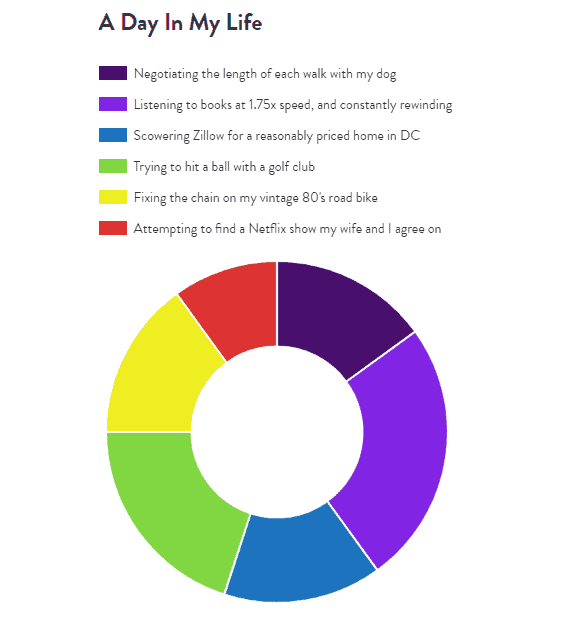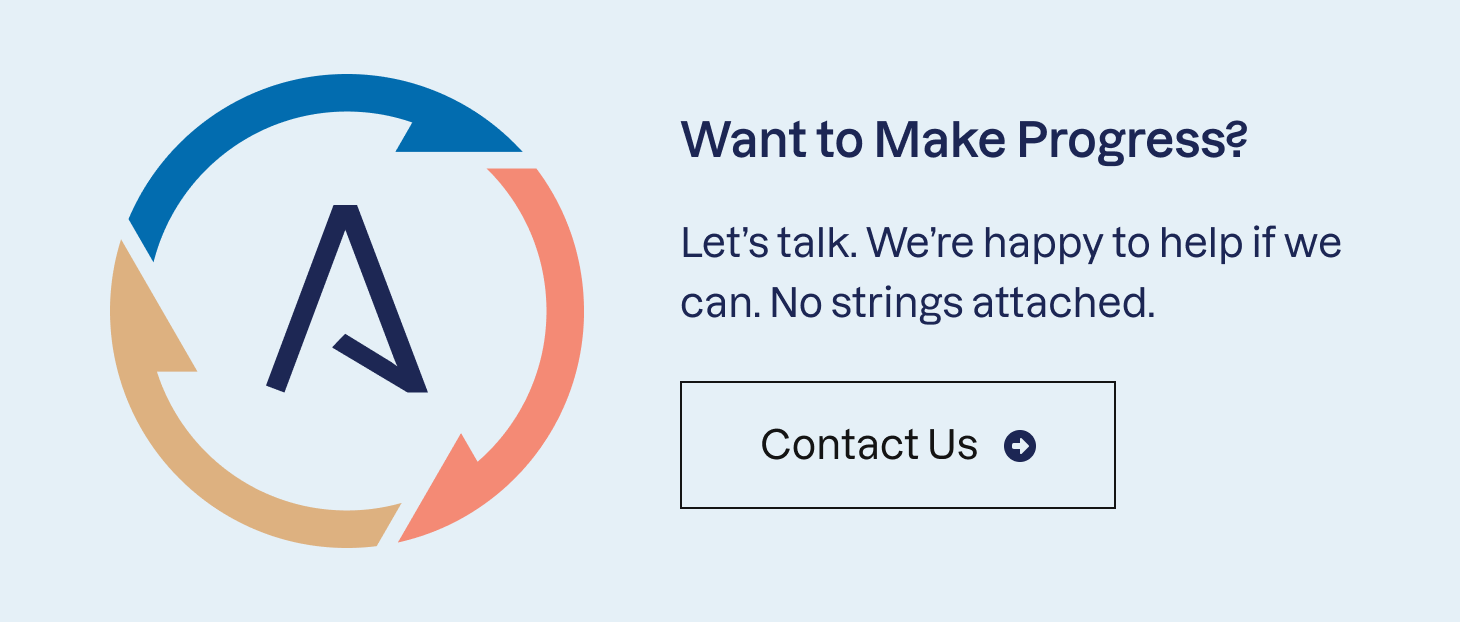Law Firm Website Design - 3 Common Misconceptions
Law firm website design has its challenges. We’ve worked with many law firms over the last decade. During that time, we’ve come to deeply understand the user journey for key audiences—prospective clients and potential recruits—and have streamlined the administrative experience on the backend for the legal marketers using them. We’ve also noted some common misconceptions law firm marketers and partners have about their website when undergoing a redesign.
Law Firm Website Design Misconception #1 – Your Practice Area Pages are the Most Important
While practice area pages play an important role in a prospective client’s journey by explaining what services your firm offers, they are typically not the point of entry nor the most heavily trafficked pages on law firm websites. In the legal services industry, referrals and word of mouth are often significant drivers of new business. Thus the entry point and where a significant amount of pageviews occur is—you guessed it—the attorney bio pages. In fact, in a recent analysis of all the law firm websites COLAB has redesigned, attorney pages receive on average 150% more pageviews than practice area or service pages. That means attorney bio pages are your most useful business development tool on your website. This is an important piece of information when prioritizing where to spend time and resources on your law firm’s website.
Before we discuss how to optimize attorney bio pages, there is one important consideration to note for the practice area section of your firm’s website. Practice area pages will benefit from flexibility, as they are directly tied to law firm growth and strategy. If your firm expands its services, you need the ability to easily add a new practice area page. If your firm makes a lateral hire, you need to connect that new attorney to the appropriate practice area page. If expanding a practice area to capture more market share, the order in your main navigation may need to change. As a marketer, you need to be empowered with a content management system that allows you to make these changes quickly and easily, adjusting the site to suit the overall business strategy.
If you are embarking on a website redesign or iterating on your existing site, here are 3 tips for how to optimize your attorney bios, the most frequently visited pages on your law firm’s website.
Be authentic
Prospective clients or potential recruits are trying to get a sense of who the attorneys are. Include information and use language that conveys what’s real about the firm and that specific individual. Relatability leads to credibility, which is table stakes for generating new business.
Be unique
Use your attorney bios to differentiate your firm from competitors. Design elements and unique content are all ways to help your attorney bio pages stand out from a sea of sameness.
Invest in photography
Work with a professional photographer to take and maintain headshots. Putting a face to your attorneys’ names allows the user to personify the services you provide. A photographer can advise on the best way to capture your attorneys’ personalities in a way that is unique to your brand.
Law Firm Website Design Misconception #2 – Less is More
The misconception that less text is better is understandable; in some marketing-specific contexts, it’s no misconception at all but rather quite accurate. We’ve all heard the truisms—people are busy, attention spans are short, less is more. However, there’s an important nuance in the purpose a law firm’s website serves that must be taken into consideration when developing a content strategy for your site. Thought leadership in the form of commentary and publications, affiliations, experience, and recognition are all critical pieces of information that generate credibility for your firm. Establishing trust with prospective clients is a critical part of the business development process and that begins well before your attorneys even have a chance to meet them. According to the American Bar Association, nearly 40% of consumers turn to the internet as a first step in finding a lawyer.
A prospective client’s journey in selecting a lawyer includes an immense amount of diligence and research. The role your website plays in making that information easily available cannot be overstated. It’s true that word of mouth and referrals are a key driver of business development in the legal industry but even that initial buyer awareness is followed by visiting the website to obtain additional information.

Now that we’ve explained why more is more when it comes to your law firm’s website, we’ll cover the 4 tactics you should employ to ensure “more” doesn’t equate to chaos.
Create a well-structured, highly organized information architecture.
This means taking into consideration the users’ journey—the questions they ask, the information they need, the steps they’ll take—not necessarily how your firm internally organizes and labels the information. We use journey mapping to ensure we understand and address the goals and actions each user type (e.g., prospective clients and potential recruits) takes. When you create a page structure that supports every step of the users’ journey, you will ensure that your website is providing information in the manner in which users expect to find it.

Provide tools that allow users to explore content in an efficient way.
Hiding text or using accordion features with the goal of creating a cleaner appearance is often at the expense of users finding the information they need. And remember, information is a critical part of the trust-building process. By creating friction in the search for information, you risk inhibiting credibility. Instead of restricting information, consider enabling the process.
Jump links (also referred to as in-page links) have often been debated in the UX community, as they can potentially confuse a user who expects a link to take them to a separate page. However, in the case of law firm websites where 1) content can be lengthy, and 2) discoverability of that content is important, jump links can be an excellent way to speed up and enrich the users’ experience.
Connecting related content is another way to enhance the users’ experience. It promotes discoverability and efficiency as the user works through deeper layers of content. This is particularly important when evaluating your firm compared to other firms. By offering up relevant articles and blog posts or connecting specific attorneys to thought leadership or practice areas, you can better shape the narrative you want a prospective client to create.
Write for a layperson
Unless you’re specifically marketing B2B within the legal industry, your copy should be straightforward and easy for those without a legal background to understand. Speak openly and clearly about your services, expertise, and results using plain English. In other words, save the legalese for your legal briefs.
Ensure content is scannable
Your content should be easily scannable, allowing the user to get the gist quickly and decide if/when they want to read further. According to Nielson Norman Group, users read 25% slower onscreen than offscreen and nearly 80% of users primarily skim rather than read. The use of section headers, subheadings, and bulleted lists will ensure you’re conveying the information that is most valuable to the reader. Headlines are also critical for SEO and key search terms so your search rankings will benefit from a very purposeful content strategy.
Law Firm Website Design Misconception #3 – The Navigation and User Experience Must be Differentiated
How do we make our website stand out from the crowd? That’s one of the most frequent questions we get from law firms and it’s an incredibly important one. The overall navigation and user experience, however, is not an area ripe for differentiation. In fact, deviating from the standard law firm information architecture pattern runs the risk of confusing or even alienating users. The UX strategy and navigation is largely the same for law firms websites—attorneys, practice areas, (sometimes) industry experience, about the firm, articles or insights, contact, careers, and search. The key to a differentiated website is not in the content architecture but rather the content itself, how you present that content, and what it conveys about your firm. There are 3 aspects of designing a law firm’s website that provide the biggest bang for your buck if your desire is to stand out from the crowd:
An innovative and brand appropriate visual design
Whether through imagery, color, and/or composition, there are many ways to enhance your firm’s visual design. Creating a visual impact that invokes a feeling of interest—“I want to learn more”—and brand trust—“I can envision working with them”—on behalf of the user will lead to more qualified leads. It doesn’t stop with the primary marketing site, however. Ensure your site design reinforces your brand’s visual identity and builds upon a greater design system, not a collection of design artifacts reserved for your site. This allows you to identify and apply the right design patterns to other touchpoints in your digital ecosystem (i.e., landing pages and microsites, social media, client portals, etc.) and strengthen your brand equity with a consistent visual identity online.
Attorney bio pages
We mentioned this above and it’s worth discussing again. This is where the personification of your services occurs; it’s also the most heavily trafficked section of your website. There is immense room for innovation and creativity in attorney bios, without sacrificing professionalism. Consider how the page design (i.e., color, imagery, layout) and unique content (e.g., interesting attorney information, thoughtful copywriting) can bring your brand’s tone and voice to life. This turns attorney bio pages into critical tools for generating new business and attracting the right talent for your firm.


Unique features and tools for your law firm website that complement your brand’s personality
This could be a calculator, interactive quiz, or utility links like client portals. Essentially they are additive features or functionality that reinforce your brand, enhance the user experience and serve as a lead generation tool. An example of this is a tool that international firm, Finnegan, employs called “My Finnegan” which preemptively gives access to the type of browsing the user might do based on what they’ve viewed. The added benefit is that it bookmarks where the user has been. This unique piece of functionality delivers a powerful impression of being one step ahead of the user, which goes a long way in building trust with clients that may be considering their services.
When considering the addition of a feature or tool to your firm’s site, be sure to understand how it reinforces your brand. For example, if your firm is known for being available 24/7 for your clients, no matter what, a 24/7 chat box would be an appropriate addition to your website. A feature with no true tie to your brand will come across as superfluous and fail to act as a true differentiator.
In a heavily saturated industry, having a digital presence that stands out is critical to your firm’s growth. Don’t let web practices of the past or common misconceptions prevent your law firm from putting its best foot forward.

